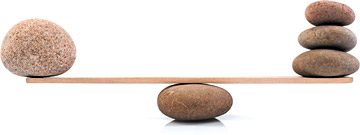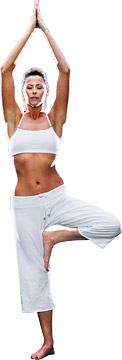To Your Health
May, 2010 (Vol. 04, Issue 05) |
|
|
When this happens, the bones of the body can become slightly misaligned; this is what might be seen as a postural distortion. These seemingly minor "misalignments" are often not painful but are the beginning of the slow-developing wear and tear called osteoarthritis.
This is the wear-and-tear arthritis many people associate with "old age" and is responsible for knee and hip degeneration, spinal disc degeneration, as well as the deformity in the upper spine called Dowager's Hump.
The Road to Better Balance
In chiropractic, balance is the focus of postural alignment, muscular strength and flexibility. We know it has a profound impact on the health of our nervous system, and how well we age can actually determine if we suffer with some forms of arthritis in our later years. Regular chiropractic adjustments ensure that all of the signals between the body and brain that facilitate proper balance travel back and forth without interruption. Research has shown that joints in the body that don't move freely turn off those signals that enhance balance. So, if your joints are not working optimally, then your balance is most certainly affected!
 Balance can diminish over time and is often complicated by neurological deficits related to diabetic neuropathy, dementia, multiple sclerosis, spinal cord injuries or tumors and degenerative changes in the spine and extremities. For older patients who suffer from these types of disorders, it is important to remember that in many cases they do respond positively to chiropractic care. Typically improvements in proprioception and balance are quite achievable. Better balance could be the difference in avoiding a devastating fall, which is particularly important as we age.
Balance can diminish over time and is often complicated by neurological deficits related to diabetic neuropathy, dementia, multiple sclerosis, spinal cord injuries or tumors and degenerative changes in the spine and extremities. For older patients who suffer from these types of disorders, it is important to remember that in many cases they do respond positively to chiropractic care. Typically improvements in proprioception and balance are quite achievable. Better balance could be the difference in avoiding a devastating fall, which is particularly important as we age.
Many chiropractors are specially trained to evaluate the structural integrity of the arches of the feet to see if they are a contributing factor to postural stress. Supporting the arches of the feet with a custom-made orthotic device (insert) that you wear in your shoes has been shown to block the abnormal foot motions that create a twisting stress in the knee, hip, pelvis and spine and that improves balance and posture. The messages sent from the feet to the brain are done so more efficiently when the arches are properly supported. This support is best implemented as early as age 6, but can be helpful to anyone who would benefit from improved balance and posture.
Balance and posture should be considered an important part of everyone's fitness from the time we are young. All of the suggestions in this article will definitely help improve your balance and muscular coordination. Don't be surprised if you notice a difference in your day-to-day activities or sports activities. You will feel stronger and more coordinated. Most importantly, you will have taken a big step in preserving the health of your spine by improving your balance.
 Balance Exercises: A Four-Step Progression
Balance Exercises: A Four-Step Progression
In addition to chiropractic adjustments and spinal pelvic stabilization with orthotic inserts, there are certain activities that promote balance and don't require any special equipment:
- Begin by standing on one leg for 30 seconds and then shift to the other side. Practice this until you can consistently stand on each leg without losing your balance.
- Stand on one leg with your arms crossed for 30 seconds and then do the same while standing on the other leg. Crossing the arms adds complexity to the amount of information going to the brain from the sensors in the muscles and joints.
- Stand on one leg with your eyes closed for 30 seconds. (Be sure you are in an area where you can support yourself if needed. Stand next to a doorway or have a chair available to reach out to for support.) Repeat with the other side. Closing the eyes increases the difficulty of the exercise by removing one of the systems of balance.
- Stand on one leg, close your eyes and cross your arms for 30 seconds. Repeat with the other side.
Brian Jensen, DC, is a graduate of the University of Nebraska and Palmer College of Chiropractic. He specializes in structural biomechanics and has been in practice for 17 years.

